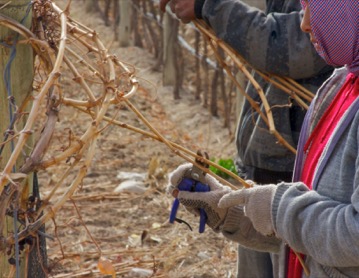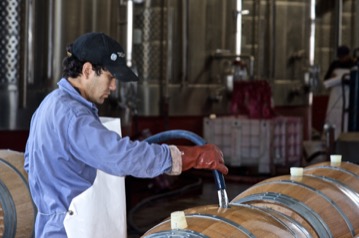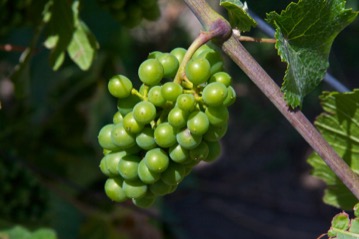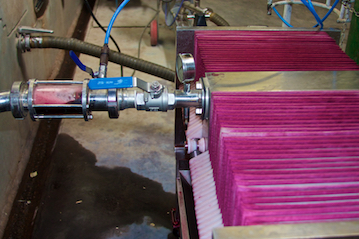
A Year in the Life of a Winemaker
This is a look at the average winemaker's schedule for an average year in the Northern Hemisphere (Southern Hemisphere months are in Italics)
January (June)

Vineyard: Vines are being pruned.
Winery The wine is aging in barrels or vats. Previous vintages are being prepared for sale. Equipment maintenance, etc.
February (July)

Vineyard: Late pruning. New grafts are prepared. Equipment maintenance, etc.
Winery: Racking (moving wine into clean barrels) begins. Some wineries add barrels of wine together to assemble the first blend. Since the wine has to be moved out of the barrels, and barrels are expensive, assembling the blend also allows the wine to be stored in a large vat while the barrels are cleaned for reuse.
March (August)

Vineyard: Final pruning. Sap begins to rise. Soil is worked to aerate and uncover base of vines.
Winery: Racking should be close to complete. Topping off continues. As the weather warms malo-lactic fermentation may start or be induced. End of previous vintage bottling, etc.
April (September)

Vineyard: General vineyard maintenance. You often see cuttings burning in the vineyards.
Winery: General maintenance. Time to finish anything that may not have gotten done earlier.
May (October)

Vineyard: Frost watch. Smudge pots are burning at night and everyone is praying. Soil is worked again to turn under weeds. First spraying against mold and mildew. Remove suckers.
Winery: Shipping of previous vintage and preparing for next racking.
June (November)

Vineyard: The vines flower. This is another critical time, so everyone is still anxious. Much of the quantity of the vintage will be determined at this stage. Shoots are thinned and tied. Second spraying.
Winery: Second racking. Older wines are racked. As weather warms barrel maintenance becomes crucial.
July (December)

Vineyard: Tiny grapes begin to develop. Vines sprayed with Bordeaux mixture. Turn the weeds into the soil again. Keep shoots trimmed.
Winery: Winery is closed down in times of heat. Steps are taken to prevent bacterial growth in winery.
August (January)

Vineyard: Color begins to change in black grapes. Trimming and weeding keep everyone busy. Preparation is made for harvest.
Winery: Everything is cleaned and inspected for the coming harvest.
September (February)

Vineyard: Final harvest preparations made. Earliest harvesting begins.
Winery: Double check everything. make sure all vats and barrels are water tight.
October (March)

Vineyard: Most vintages start late September and continue into early October. Once the grapes are picked and the whites are pressed, the grape skins are spread on the vineyard and turned into the soil in preparation of the winter.
Winery: Stemming, crushing and in some cases pressing, fill the hours. The new wine begins to ferment. Last year's wine is racked and moved to the aging cellar.
November (April)

Vineyard: Shoots are cut and collected to burn (or sell as firewood in some cases). Vineyard is plowed and soil heaped on the base of the vines.
Winery: Young wines are now finished with fining and filtering, and are then bottled. Older vintages may also be bottled. Wines that will be aged are still fermenting in contact with their skins.
December (May)

Vineyard: For some vineyards the soil needs to be replaced after rains. Pruning starts about halfway through the month.
Winery: The end of fermentation for the hearty reds. Bottling of young and older wines is completed. Wines for aging are moved from vat to barrel after fining and possible filtering.